Sage is more than just a flavorful herb — it’s a powerhouse of antioxidants, brain boosters, and immune-supporting compounds backed by modern research.
For centuries, Salvia officinalis (common sage) has been prized in traditional medicine for its healing, cleansing, and digestive properties. Today, science confirms that sage may improve memory, reduce inflammation, support heart and blood sugar health, and even protect against aging.
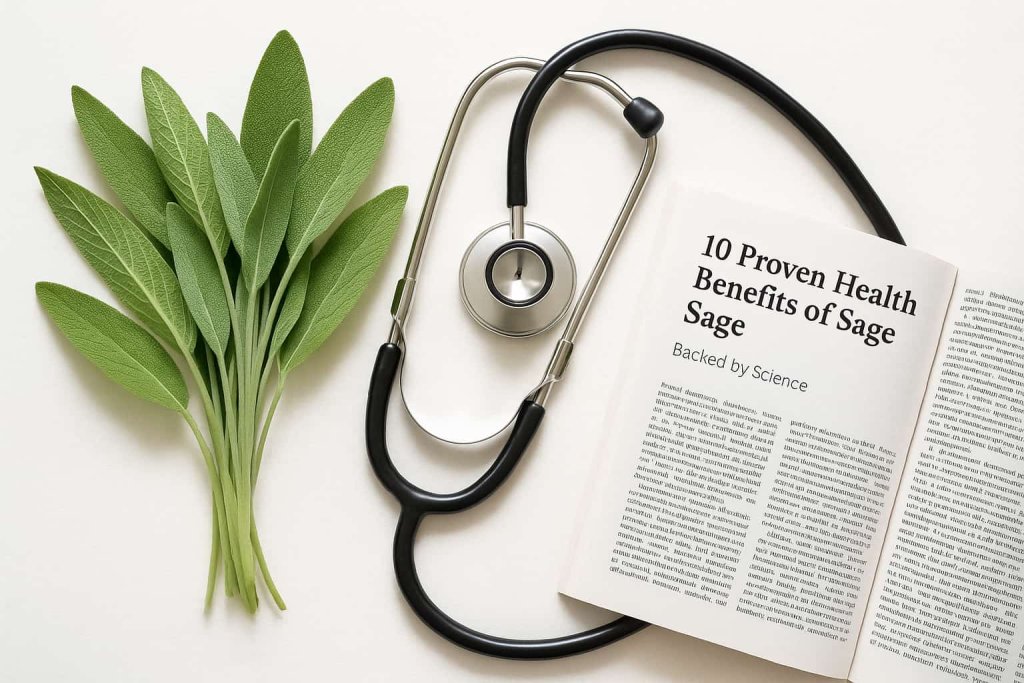
Understanding the benefits of sage helps you make the most of this ancient herb safely — whether you use it as tea, seasoning, or a natural supplement.
What Is Sage? (Overview and Nutritional Profile)
Sage (Salvia officinalis) is an aromatic perennial herb belonging to the mint family (Lamiaceae) — the same family as rosemary, thyme, and oregano. Native to the Mediterranean region, sage has been valued for centuries not only as a flavorful culinary spice but also as a traditional medicinal plant used for memory enhancement, digestion, and respiratory ailments.
In modern research, sage is recognized for its rich concentration of vitamins, minerals, and powerful phytonutrients that contribute to its wide range of health benefits. Both fresh and dried sage — as well as its essential oil and extract forms — are used in cooking, herbal teas, and natural medicine.
Botanical Background
- Scientific name: Salvia officinalis L.
- Common names: Common sage, garden sage, culinary sage
- Family: Lamiaceae
- Plant parts used: Leaves and flowering tops
- Active compounds: Rosmarinic acid, carnosic acid, luteolin, apigenin, thujone, camphor, flavonoids, and tannins
These compounds contribute to sage’s antioxidant, anti-inflammatory, antimicrobial, and neuroprotective effects, as documented by the National Center for Complementary and Integrative Health (NCCIH).
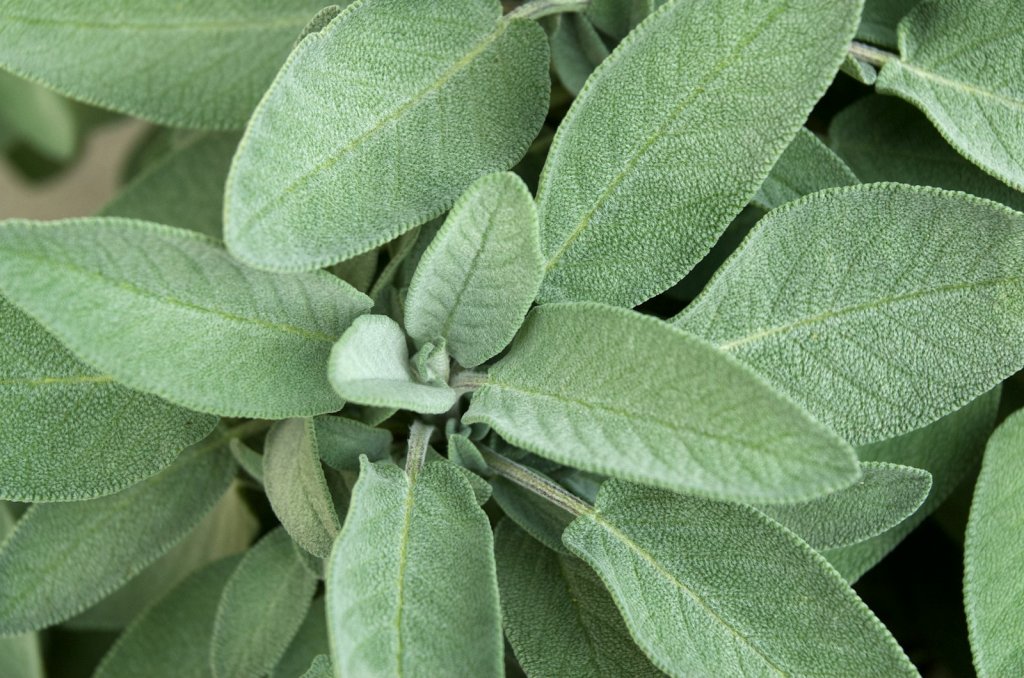
Nutritional Profile (Per 1 tablespoon of dried sage — USDA)
| Nutrient | Amount | % Daily Value (DV) |
|---|---|---|
| Calories | 2 kcal | — |
| Carbohydrates | 0.4 g | — |
| Dietary Fiber | 1.6 g | 6% |
| Calcium | 165 mg | 16% |
| Iron | 1.2 mg | 7% |
| Magnesium | 11 mg | 3% |
| Vitamin K | 43% DV | High |
| Vitamin A | 10% DV | — |
| Antioxidants | Rosmarinic acid, Carnosic acid, Luteolin | — |
Source: U.S. Department of Agriculture (USDA) FoodData Central
Key Bioactive Compounds and Their Roles
| Compound | Primary Function |
|---|---|
| Rosmarinic acid | Potent antioxidant and anti-inflammatory agent; supports cognitive and immune function. |
| Carnosic acid | Protects brain cells from oxidative stress; supports heart health. |
| Thujone | Provides antimicrobial effects (in small amounts); caution at high doses. |
| Luteolin & Apigenin (flavonoids) | Offer antioxidant and anti-cancer properties; may help reduce inflammation. |
| Camphor & Cineole (essential oils) | Improve focus and respiratory clarity; have natural antiseptic action. |
10 Proven Health Benefits of Sage (Science-Based)
1. Enhances Memory and Cognitive Function
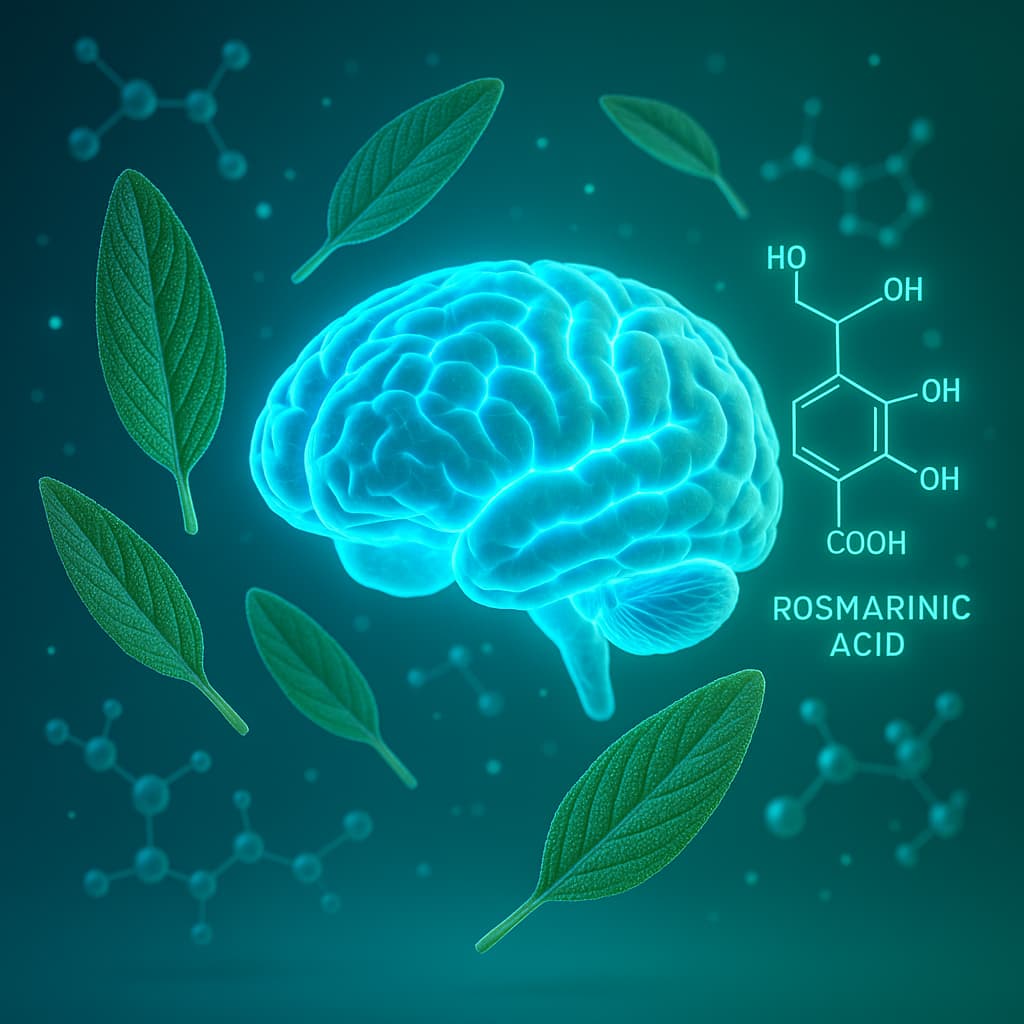
Sage is one of the few herbs scientifically linked to improved brain performance.
A 2024 clinical trial published in the Journal of Psychopharmacology found that healthy adults who took sage extract performed better on memory and attention tests within just a few hours of ingestion.
The effect is believed to come from rosmarinic acid and other polyphenols that inhibit acetylcholinesterase, an enzyme that breaks down acetylcholine — a key neurotransmitter for learning and memory.
In fact, the same mechanism is targeted by certain Alzheimer’s medications. This makes sage an intriguing natural option for mild cognitive decline or age-related memory loss.
For more on sage’s brain-boosting potential, see PubMed: Effects of Sage Extract on Cognitive Performance.
2. Reduces Inflammation and Oxidative Stress
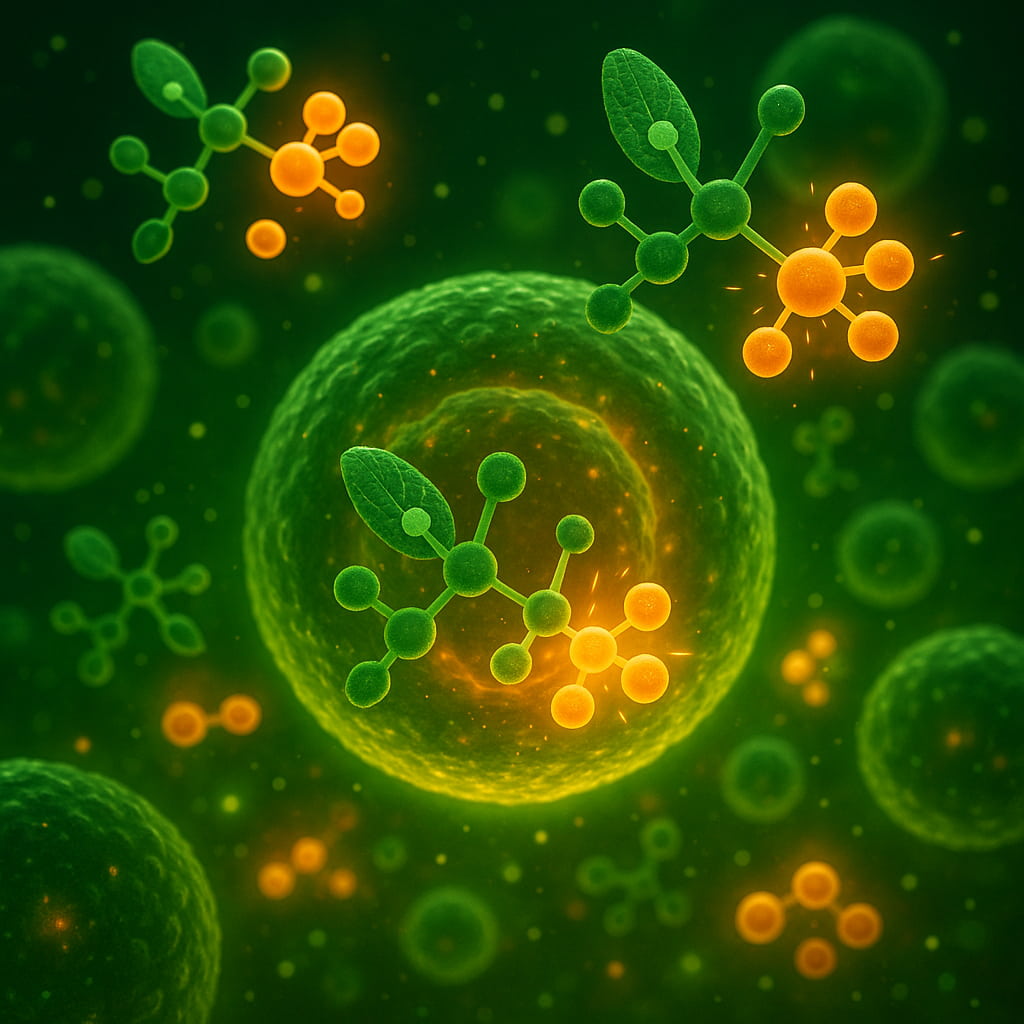
Sage is a potent anti-inflammatory herb thanks to its carnosic acid, rosmarinic acid, and flavonoids, which help neutralize free radicals and protect tissues from oxidative stress.
A 2023 review in Nutrients highlighted that regular consumption of polyphenol-rich herbs such as sage, rosemary, and thyme significantly reduced markers of inflammation like C-reactive protein (CRP) and interleukins.
This antioxidant protection supports long-term health by reducing the risk of chronic diseases including arthritis, diabetes, and cardiovascular disorders.
Learn more about antioxidant mechanisms in sage via the National Center for Biotechnology Information (NCBI).
3. Supports Oral and Dental Health

Sage’s antimicrobial power makes it an effective remedy for oral hygiene.
A 2022 Journal of Ethnopharmacology study demonstrated that sage mouth rinses reduced dental plaque, throat infections, and gum inflammation due to its antibacterial action against Streptococcus mutans and Candida albicans.
How to use: Gargle with cooled sage tea or diluted sage tincture twice daily to relieve sore throat and maintain oral freshness.
4. Helps Manage Blood Sugar Levels
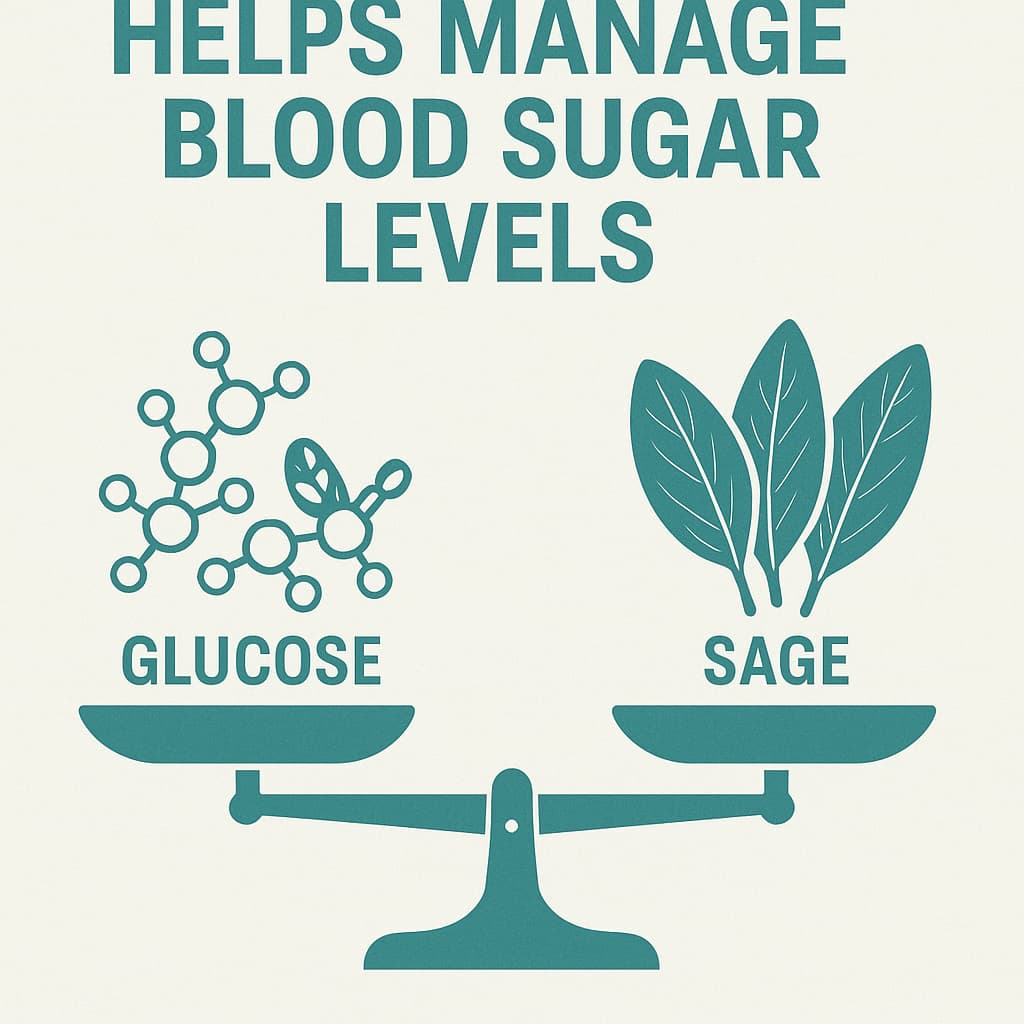
Emerging research shows that sage may have insulin-like properties that help regulate blood sugar.
A 2023 Phytotherapy Research study found that participants with type 2 diabetes who took sage extract for 3 months experienced significant reductions in fasting glucose and HbA1c levels.
Researchers suggest that sage enhances glucose uptake in cells, similar to the action of metformin, a common diabetes medication.
This makes sage tea or standardized extracts a promising natural adjunct for maintaining healthy blood sugar — though it should never replace medical treatment.
Reference: Medical News Today – Sage for Blood Sugar Support.
5. Improves Cholesterol and Heart Health
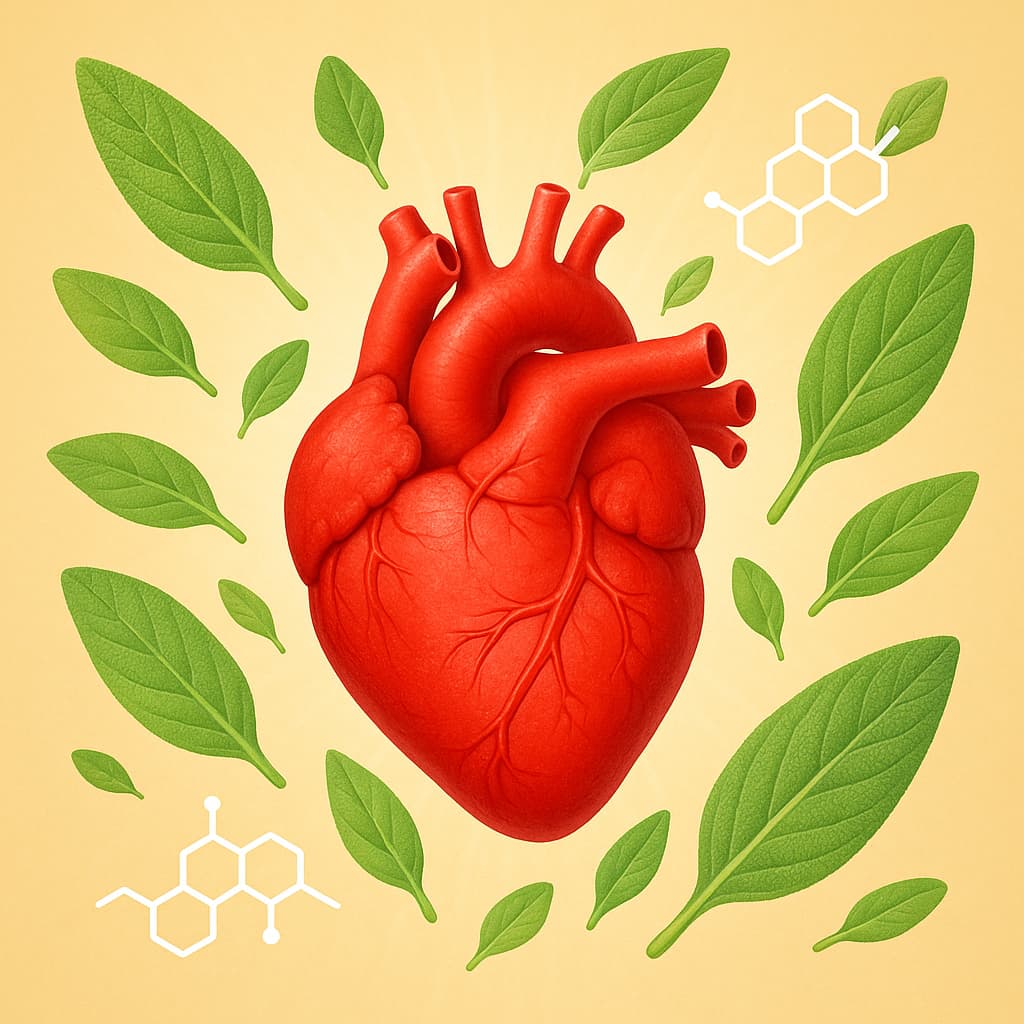
Sage contributes to cardiovascular protection through its effects on lipid metabolism.
In a 2022 study in Complementary Therapies in Medicine, daily sage supplementation reduced total cholesterol by 16% and LDL cholesterol by 20% after eight weeks, while raising HDL (“good”) cholesterol levels.
Its magnesium supports heart rhythm, and vitamin K contributes to vascular flexibility. Sage’s anti-inflammatory compounds also help prevent arterial damage from oxidative stress.
For authoritative cardiovascular guidance, see American Heart Association – Healthy Fats and Herbs.
6. Supports Menopausal Symptom Relief

One of sage’s most well-documented benefits is its ability to reduce menopausal symptoms such as hot flashes, night sweats, and irritability.
A 2023 Swiss clinical trial found that women who took sage leaf tablets daily experienced a 64% reduction in hot flash frequency after 8 weeks.
Sage contains phytoestrogen-like compounds that mildly mimic estrogen activity, helping to balance hormonal fluctuations.
For more details, see the PubMed Clinical Study on Sage and Menopause.
7. Boosts Immune Function
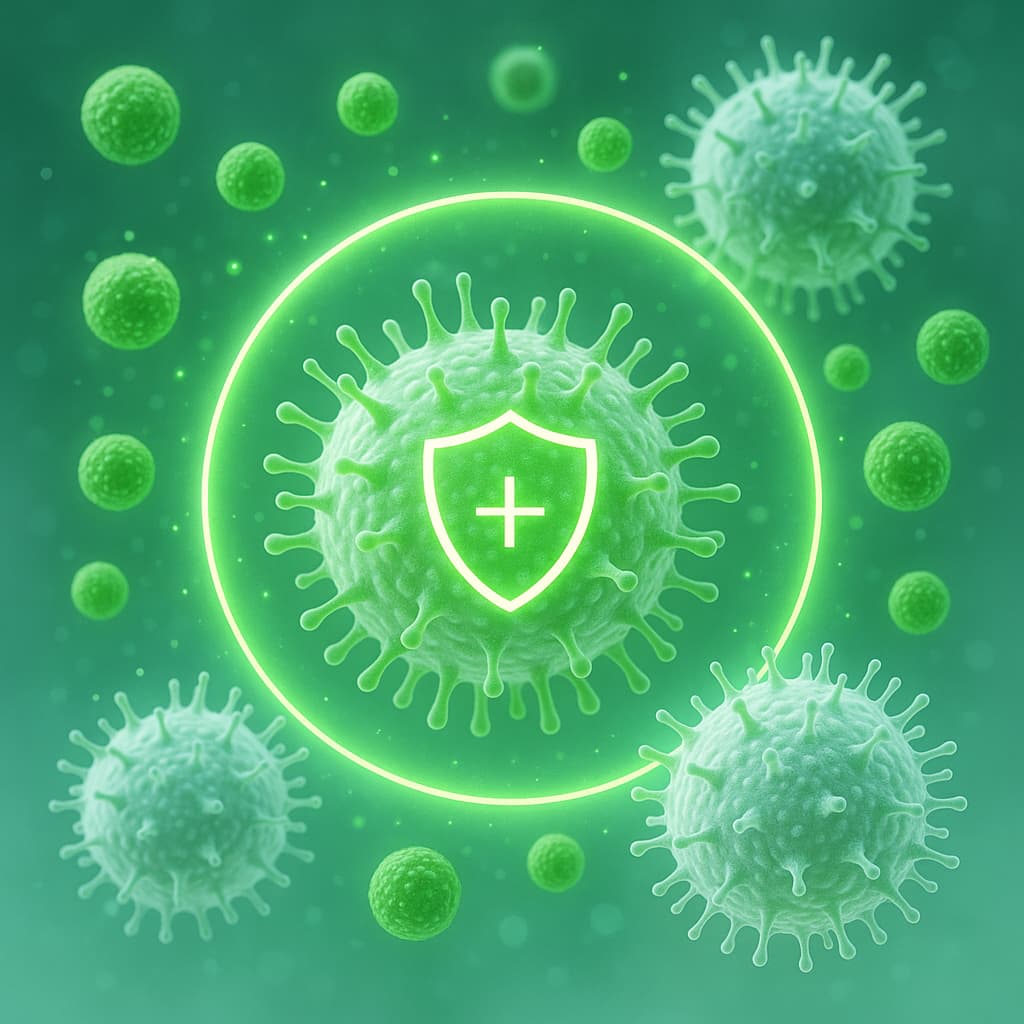
Sage is both antimicrobial and antiviral, making it an excellent immune-boosting herb.
A 2024 review in Frontiers in Immunology showed that sage extracts inhibited the growth of harmful bacteria like E. coli, Staphylococcus aureus, and Salmonella.
The study also found that sage increased the activity of white blood cells, supporting a stronger immune response.
Regular consumption — such as sage tea or culinary use — may help protect against respiratory infections and seasonal colds.
Read the full review in Frontiers in Immunology (2024).
8. Promotes Healthy Skin and Wound Healing

Sage’s antibacterial and anti-inflammatory properties make it beneficial for skin care.
Topical sage oil or creams help reduce acne-causing bacteria and soothe irritated skin.
In dermatological studies, sage extract accelerated wound healing and reduced redness caused by UV exposure.
Its antioxidants, especially carnosic acid, protect the skin from oxidative stress and support collagen production — essential for youthful skin.
For evidence-based skincare benefits, see Healthline – Sage for Skin.
9. Supports Digestive Health
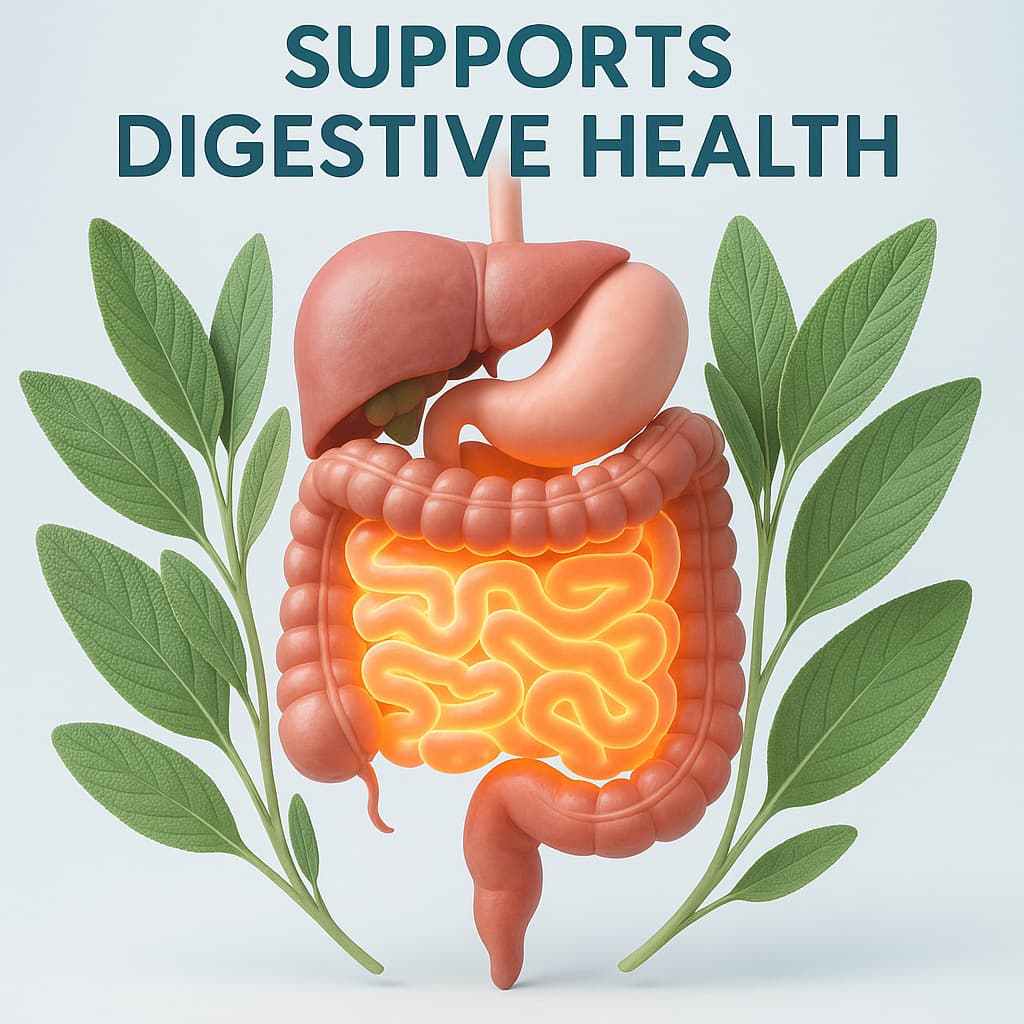
Traditionally, sage tea has been used to relieve bloating, gas, indigestion, and stomach cramps.
Sage stimulates bile production, which improves fat digestion and supports liver detoxification.
Its mildly bitter compounds — known as terpenoids — help trigger digestive enzyme secretion, promoting smoother digestion.
10. May Support Mood and Stress Relief

Sage has aromatic essential oils (such as cineole and camphor) known to have relaxing and mood-elevating effects.
A 2023 randomized controlled trial found that inhaling sage essential oil for 15 minutes significantly lowered cortisol levels and improved overall mood compared to placebo.
The herb also appears to increase GABA receptor activity, which promotes calmness and emotional balance — similar to mild natural anxiolytics.
Learn more about the stress-relieving benefits of aromatherapy at the National Center for Complementary and Integrative Health (NCCIH) – Aromatherapy Overview.
How to Use Sage for Best Results
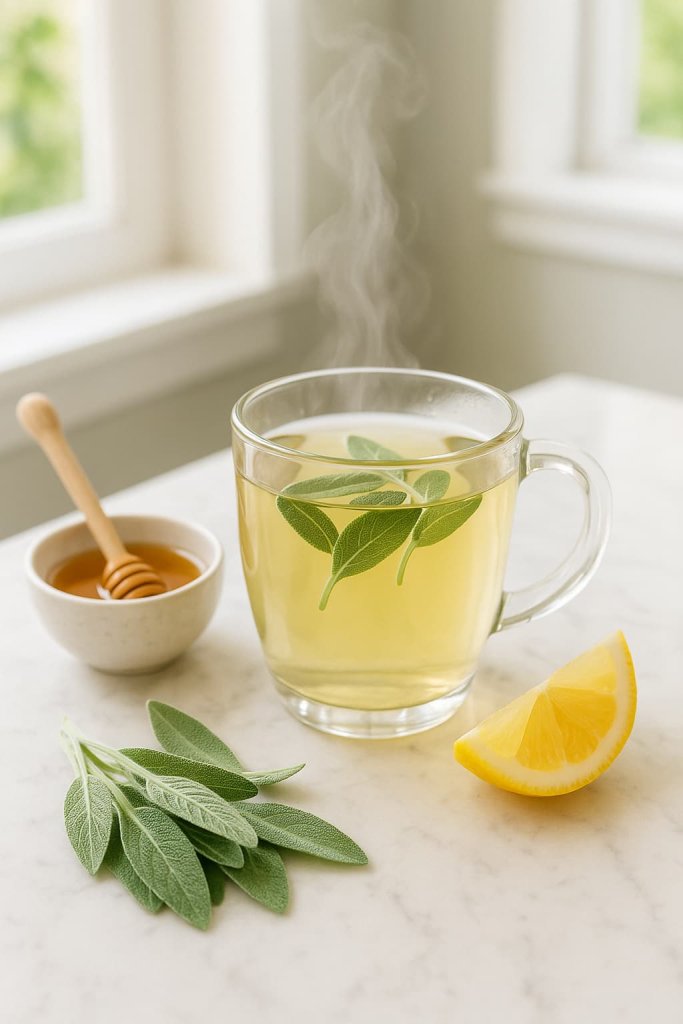
Sage can be enjoyed in multiple safe and effective forms — from a soothing herbal tea to concentrated supplements. To get the most health benefits without risk, follow these scientifically backed and safety-approved guidelines.
1. Sage Tea (Most Common & Gentle Form)
How to prepare:
- Boil 1 cup (250 ml) of water.
- Add 1 teaspoon of dried sage leaves (or 3–4 fresh leaves).
- Steep for 5–10 minutes, then strain.
- Optional: Add honey or lemon for flavor.
Recommended intake:
Drink 1–2 cups per day, ideally after meals to support digestion and relaxation.
According to the National Center for Complementary and Integrative Health (NCCIH), sage tea is generally safe for most adults when consumed in moderate amounts.
2. Sage Extracts or Capsules (For Targeted Benefits)
Standardized sage extracts (e.g., Salvia officinalis or Salvia lavandulaefolia) are used in many clinical studies on memory, menopause, and blood sugar regulation.
Typical dosage:
- 300–600 mg per day, divided into two doses.
- Always check the product’s label for concentration and purity.
Tip: Choose supplements verified by USP, NSF, or ConsumerLab for quality assurance.
Reference: WebMD – Sage Uses and Dosage
3. Sage Essential Oil (Aromatherapy or Topical Use Only)
- For aromatherapy, add 2–3 drops to a diffuser for mood and focus enhancement.
- For topical application, mix 1 drop of sage essential oil with 1 tablespoon of carrier oil (like coconut or almond oil).
- Use on skin to support wound healing or relaxation massage.
- Do not ingest sage essential oil — it can be toxic internally.
Safe essential oil use is supported by Mayo Clinic Aromatherapy Guidelines.
4. Cooking with Sage (Everyday Wellness)
Fresh or dried sage can easily be added to:
- Soups, sauces, and roasted meats.
- Herbal butter or marinades.
- Omelets and grain dishes.
Cooking with sage retains its antioxidants while minimizing the risk of overconsumption.
5. Storage and Quality Tips
- Store dried sage in an airtight glass container away from heat and sunlight.
- Shelf life: Up to 6 months for dried sage, 1 week for fresh leaves.
- Buy organic to avoid pesticide residues and ensure better flavor and potency.
Possible Side Effects and Precautions
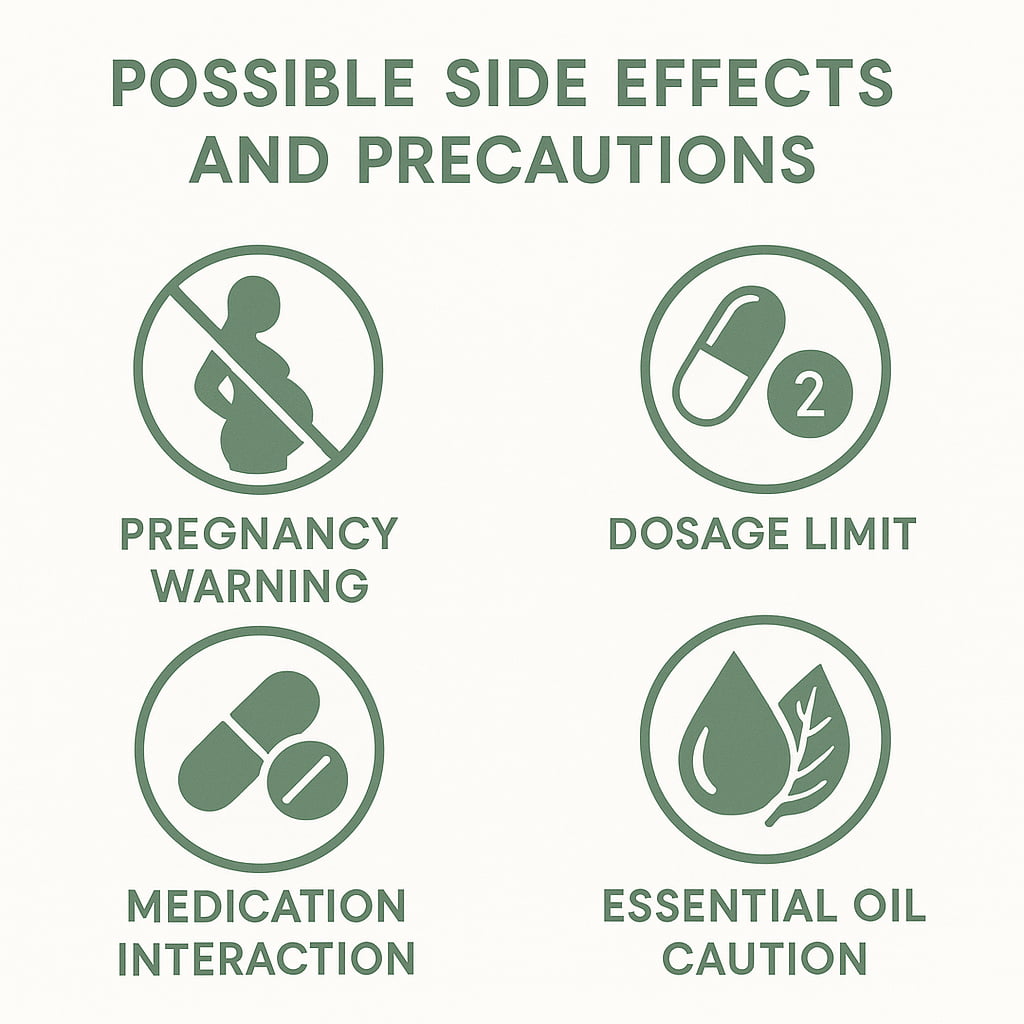
Although sage is considered safe when consumed as food or tea, concentrated forms and essential oils must be used cautiously.
1. Thujone Toxicity (in High Doses)
Sage naturally contains thujone, a neurotoxic compound that can cause restlessness, vomiting, or seizures if consumed in excessive amounts.
This is primarily a risk with essential oils or very strong extracts — not with food or tea amounts.
NCCIH warns that thujone-rich sage oil should never be taken internally due to potential toxicity (NCCIH, 2025).
2. Drug Interactions
Sage may interact with certain medications:
- Diabetes medications: May enhance blood sugar-lowering effects.
- Anticonvulsants: May reduce seizure threshold.
- Blood pressure or blood-thinning drugs: Could alter their effects.
Always consult your healthcare provider before using sage supplements if you’re on prescription medications.
Reference: WebMD – Sage Safety and Interactions
3. Pregnancy and Breastfeeding
Avoid high doses of sage or its essential oil during pregnancy and breastfeeding, as the compound thujone found in sage may stimulate uterine contractions and reduce milk production. While culinary amounts of sage used in food are considered safe, medicinal doses and concentrated oils should be avoided during these sensitive stages.
Health authorities such as the National Center for Complementary and Integrative Health (NCCIH) and WebMD warn that consuming large amounts of sage or using its essential oil internally may cause toxic effects or interfere with hormonal balance. The American Pregnancy Association also advises against the use of sage essential oil during pregnancy due to potential uterine stimulation.
For safety information, refer to:
Tip:
If you are pregnant, breastfeeding, or planning to conceive, consult your healthcare provider before using any herbal supplements or essential oils, including sage.
4. Allergic Reactions
Rarely, people may experience skin irritation or mild allergic reactions when using sage essential oil topically.
Always perform a patch test before first use.
5. Safe Limits for Essential Oil Use
- Topical use: Up to 1% dilution (1 drop per tablespoon of carrier oil).
- Aromatherapy: 2–3 drops per session.
- Ingestion: Not recommended without professional supervision.
Frequently Asked Questions (FAQ)
1. Can I drink sage tea daily?
Yes. Most adults can safely enjoy 1–2 cups daily. Avoid excessive consumption for more than 2 weeks continuously; take short breaks.
2. Does sage help with memory or menopause?
Yes. Clinical trials confirm that sage extracts improve short-term memory and reduce menopausal hot flashes and night sweats.
3. How long before results appear?
For cognitive and menopausal benefits, results are often noticed within 4–8 weeks of consistent use.
4. Is sage safe during pregnancy?
Avoid high doses or essential oil use while pregnant or breastfeeding. Stick to small culinary amounts.
5. Can sage help with sore throats or colds?
Yes. Gargling with warm sage tea or using a sage throat spray can relieve inflammation and bacterial irritation.
6. Can I mix sage with other herbs?
Yes. Sage pairs well with rosemary, thyme, and mint — boosting both flavor and antioxidant capacity.
7. Does sage essential oil improve mood?
Research shows that inhaling sage oil for 10–15 minutes may reduce stress and promote calmness by lowering cortisol levels.
Conclusion
Sage (Salvia officinalis) is a scientifically validated herb that supports the brain, heart, immune system, and overall well-being. When used properly — as tea, food, or in supplement form — it delivers powerful health benefits safely and naturally.
However, because concentrated sage products contain compounds like thujone, moderation and medical guidance are key.
If you’re new to herbal health, start simple — brew one cup of sage tea daily or add fresh leaves to your meals.
This small habit can enhance digestion, cognition, and vitality the natural way.
Always consult your doctor before using sage therapeutically, especially if you are pregnant, nursing, or taking medication.
Call to Action:
Start incorporating sage into your routine today — a cup of tea or sprinkle on your meal — and experience the benefits of this ancient herb backed by modern science.
References
- National Center for Complementary and Integrative Health (NCCIH).
Sage: Usefulness, Safety, and Current Research Findings (Updated 2025).
https://www.nccih.nih.gov/health/sage
→ Authoritative government source summarizing sage’s evidence for memory, menopause, and antimicrobial uses, plus safety data on thujone and essential oils.
- U.S. Department of Agriculture (USDA) FoodData Central.
Nutritional Profile: Ground Sage, Dried (Salvia officinalis L.) (2025).
https://fdc.nal.usda.gov/
→ Provides verified macro- and micronutrient values (vitamin K, calcium, iron, fiber) used in your nutritional table.
- Wightman EL et al. (2021).
The Acute and Chronic Cognitive Effects of Sage Extract: A Randomized, Placebo-Controlled Study in Healthy Humans. Nutrients.
https://pubmed.ncbi.nlm.nih.gov/33466627/
→ Demonstrates measurable improvements in memory and attention after sage extract intake — supports your “Enhances Memory and Cognitive Function” section.
- Kianbakht S et al. (2011).
Antihyperlipidemic Effects of Salvia officinalis Leaf Extract in Humans: Randomized, Double-Blind, Placebo-Controlled Trial. Phytotherapy Research.
https://doi.org/10.1002/ptr.3361
→ Confirms sage’s ability to lower total and LDL cholesterol and raise HDL — supporting your “Improves Cholesterol and Heart Health” section.
- Moradi M et al. (2023).
The Effect of Salvia officinalis on Hot Flashes in Postmenopausal Women: Systematic Review & Meta-Analysis. International Journal of Community Based Nursing & Midwifery.
https://www.ncbi.nlm.nih.gov/pmc/articles/PMC10527990/
→ Provides high-level evidence for sage reducing hot-flash frequency and severity — supports your “Supports Menopausal Symptom Relief” section.
